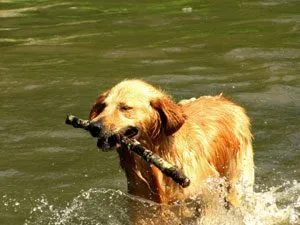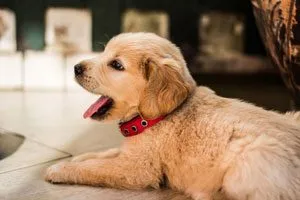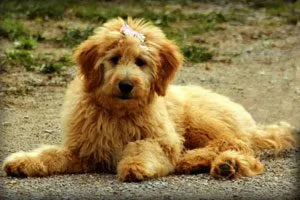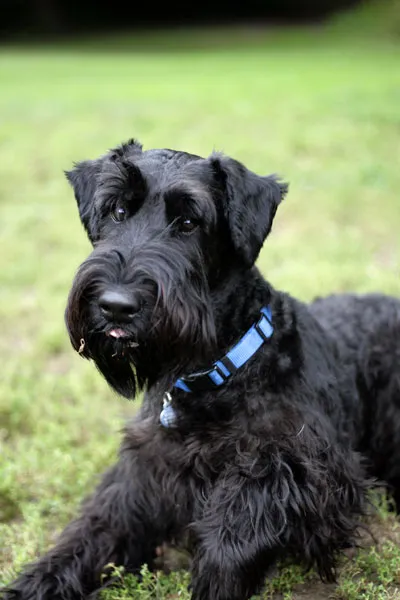Welcoming a dog into a home with an existing feline resident can be a delightful experience, especially when considering the majestic presence of a large dog. While some might instinctively shy away from introducing big dogs to cats due to perceived risks, many large dog breeds possess temperaments that make them surprisingly harmonious housemates for felines. The key lies in understanding breed-specific traits, individual personalities, and implementing proper introduction techniques. This article from Dog Care Story will delve into some of the most compatible Large Dog Breeds That Are Good With Cats, offering insights to help you find your next furry family member.
Top Large Dog Breeds Known for Cat Compatibility
Based on extensive experience with various breeds and widely recognized temperament traits, the following large dog breeds often prove to be excellent companions for cats. Their generally gentle nature, patience, and trainable disposition make them stand out.
Boxer
Boxers are renowned for being incredibly family-oriented, gentle, and loyal. Despite their muscular build and playful energy, they often display a remarkable patience, particularly with children and, by extension, cats. Many Boxers integrate seamlessly into multi-pet households, treating cats as part of their beloved family pack. Their intelligence and eagerness to please make them relatively easy to train, further aiding in harmonious cohabitation. A well-socialized Boxer, like the 80-pound gentle giant Ben, who happily coexisted with cats, exemplifies how this breed can be a wonderful, albeit large, companion for your feline friend.
 A fawn-colored Boxer dog sitting calmly
A fawn-colored Boxer dog sitting calmly
Collie
Collies are highly intelligent and sensitive dogs from the herding group, known for their gentle and protective nature. Their calm demeanor extends to interactions with other pets, including cats. While their herding instincts might occasionally manifest as a gentle nudge or a desire to keep everyone in order, a well-trained Collie understands that cats are not to be “herded” in an aggressive manner. Many Collie owners report their dogs being incredibly sweet and tolerant of their feline housemates, often forming strong bonds. Their mellow temperament ensures they are generally not a threat to the smaller, more agile cat.
Golden Retriever
Golden Retrievers consistently rank high among the best family dogs, and their compatibility with cats is no exception. These outgoing, playful, and social dogs are known for their patience, obedience, and gentle nature. Goldens are eager to please and easily trained, making them adaptable to various living situations, including those with cats. Their natural inclination to be friendly towards everyone they meet often means they view cats as just another member of their beloved family. Owners frequently describe them as tolerant and accepting, making them a fantastic choice for a multi-pet home.
 A happy Golden Retriever dog sitting in green grass
A happy Golden Retriever dog sitting in green grass
Labrador Retriever
Much like Golden Retrievers, Labradors are celebrated for their friendly, outgoing personalities and their ability to get along with virtually everyone and everything. Their gentle disposition, coupled with an eagerness to please, makes them highly trainable and excellent companions for children and cats alike. Labradors often see cats as part of their extended family and are known for their tolerance and patience. With proper introductions, a Labrador will typically welcome a cat into the household with open paws, becoming a loyal and protective, yet gentle, companion.
 An adorable Labrador Retriever puppy sitting on grass
An adorable Labrador Retriever puppy sitting on grass
Goldendoodle
Goldendoodles, a popular crossbreed, inherit many desirable traits from their Golden Retriever and Poodle parents, including an affectionate, easy-going, and social nature. They are often lauded for their friendly disposition and their ability to get along well with other pets, making them a strong contender for cat-friendly households. Their intelligence and eagerness to please also contribute to their trainability, which is crucial for fostering positive interactions with cats. Many Goldendoodles display a calm and tolerant attitude, easily accepting cats into their home territory.
 A fluffy Goldendoodle dog sitting patiently
A fluffy Goldendoodle dog sitting patiently
Newfoundland
Newfoundlands are the quintessential “gentle giants” of the dog world. These large, docile dogs are renowned for their sweet temperaments, patience, and protective instincts. They are typically good with all people and pets, including cats, thanks to their calm and friendly nature. Newfoundlands are highly trainable and generally tolerant of other animals, often displaying a surprisingly soft touch despite their imposing size. Their easygoing demeanor makes them ideal for homes seeking a large, cat-compatible companion who will likely treat a feline with respect and gentle curiosity.
 A large, black Newfoundland dog with a thick coat
A large, black Newfoundland dog with a thick coat
Standard Poodle
While Poodles come in various sizes, the Standard Poodle is a large and highly intelligent breed known for its calm demeanor and eagerness to please. Their smarts make them incredibly trainable, which is a huge advantage when introducing them to cats. Standard Poodles are not typically driven by a strong prey instinct towards household pets and can be taught to coexist peacefully. Their composed nature means they are less likely to overstimulate or frighten a cat, making them a suitable choice for a multi-pet household. The key, as with any breed, is consistent training and socialization from a young age.
English Bulldog
English Bulldogs are well-loved for their friendly temperament, generally docile nature, and easygoing disposition. They are affectionate and loyal companions who often get along wonderfully with all family members, including cats. Their low energy levels mean they are less likely to chase or bother a cat excessively. English Bulldogs tend to be quite tolerant and adaptable, often preferring a calm coexistence over boisterous play with their feline counterparts. Their sturdy build and relaxed attitude contribute to their reputation as cat-friendly large dogs.
American Staffordshire Terrier
The American Staffordshire Terrier, often misunderstood, can be a loving and loyal family dog. While they are a terrier breed (which often have higher prey drives), many individuals of this breed have proven to be excellent with cats when properly socialized and introduced. These dogs are intelligent and eager to please, making them trainable. It’s crucial to acknowledge that their powerful build means careful supervision and a thorough understanding of their individual history are paramount. With dedicated training and a home environment that prioritizes safety, an Amstaff can be a devoted companion to a cat.
Giant Schnauzer
The Giant Schnauzer is not typically found on lists of cat-friendly breeds due to its strong working dog instincts and protective nature. However, individual temperament plays a significant role. Some Giant Schnauzers, especially those with specific training and medication to maintain calmness, have been known to coexist peacefully with cats. This breed is powerful and intelligent, requiring an experienced owner committed to extensive socialization and training from an early age. If considering a Giant Schnauzer for a cat-friendly home, thorough individual assessment and professional guidance are strongly recommended. The success of such a pairing often depends more on the individual dog’s personality and the owner’s diligence than on typical breed traits.
 A large, dark-coated Giant Schnauzer standing alert
A large, dark-coated Giant Schnauzer standing alert
Essential Tips for Harmonious Multi-Pet Households
Regardless of the breed, a successful cohabitation between a large dog and a cat requires more than just choosing the right dog. Here are some essential tips to ensure a peaceful multi-pet household:
Early Socialization is Key
Introducing a puppy to a cat at a young age, or an adult dog with a known positive history with cats, significantly increases the chances of a successful bond. Early, positive exposure helps both pets learn to accept and respect each other’s presence.
Proper Introductions Are Paramount
Never simply throw a dog and cat together. Implement a slow, gradual introduction process. Start with scent swapping, then visual contact through a barrier, followed by supervised, short interactions. Always use positive reinforcement for calm behavior.
Create Safe Spaces for Cats
Cats need their own territory where they can escape and feel secure, away from the dog. Provide high perches, cat trees, and access to rooms that the dog cannot enter. This allows the cat to retreat and observe on their own terms.
Consistent Supervision and Training
Especially during the initial stages, never leave your large dog and cat unsupervised. Consistent training for your dog, focusing on commands like “leave it” and “stay,” can prevent unwanted chasing or overly boisterous play. Many dogs can also be trained not to shed excessively, making them friendly additions to any home.
Exercise and Mental Stimulation
A well-exercised and mentally stimulated large dog is a calmer dog. Ensuring your dog gets enough physical activity and engaging mental puzzles can reduce their energy levels, making them less likely to harass or chase the cat out of boredom.
Respecting Boundaries
Teach your dog to respect the cat’s personal space. This includes not cornering the cat, not eating the cat’s food, and giving the cat room to move freely. Patience is key in teaching a large dog to be gentle and respectful with their smaller housemate.
Breeds to Approach with Caution (or Avoid) with Cats
While individual temperament is always a factor, some large dog breeds possess strong prey drives or high energy levels that can make them less suitable for living with cats. These breeds may require extra caution, extensive training, and experienced owners to manage safely in a multi-pet home.
Breeds with high prey drives, such as many Terriers, Sight Hounds, and certain Working and Sporting breeds, often view fast-moving small animals as prey. Examples of large breeds that frequently appear on lists of dogs not typically good with cats include:
- Sight Hounds: Afghan Hound, Greyhound, Irish Wolfhound, Rhodesian Ridgeback, Saluki, Scottish Deerhound, Whippet. Their instinct to chase anything that moves can be challenging to redirect.
- Working Breeds: Akita Inu, Alaskan Malamute, Bullmastiffs, Doberman Pinscher. These breeds often have strong protective instincts or a history of independent work, which might translate into less tolerance for a cat’s quick movements.
- Siberian Husky: Huskies are often considered a poor choice for cat owners due to their strong prey drive. However, some individual Huskies, especially if raised with cats from puppyhood, might adapt. One such Husky, a puppy, showed no aggression towards cats when passing them. This highlights that individual testing is critical, but the general breed tendency should be a significant consideration.
- Sporting Breeds: Weimaraner, Wirehaired Pointing Griffon. While many sporting dogs can be gentle, some have intense hunting instincts that can be difficult to suppress around cats.
It is always important to remember that these are generalizations, and exceptions exist. However, for the safety and well-being of both your dog and cat, approaching these breeds with extreme caution or considering other options might be a safer choice.
Considering Mixed Breeds and Adoption
You don’t necessarily need a purebred dog to find a cat-friendly companion. Many mixed-breed dogs exhibit wonderful temperaments, often combining the best traits of various breeds. The key is to assess the individual dog’s personality and history.
When looking for a dog to join a cat household, consider adopting from a reputable dog rescue or shelter. Many rescues employ behaviorists who thoroughly assess each dog’s temperament, including their compatibility with cats, before placing them for adoption. This crucial step can provide invaluable insight and increase the likelihood of a successful match, whether you’re looking for a large dog, or perhaps considering options like mini dog breeds that don’t shed or even the smallest dog breeds that don’t shed if your lifestyle preferences lean towards smaller companions. You might also find dogs that don’t shed and stay small to be a good fit if shedding is a concern.
Final Thoughts
Bringing a large dog into a home with cats can be a rewarding experience, enriching the lives of all family members. While the size difference might seem daunting, many large dog breeds possess the gentle, patient, and trainable temperaments required for harmonious cohabitation. Breeds like Boxers, Collies, Golden Retrievers, Labradors, Goldendoodles, and Newfoundlands often shine in multi-pet homes.
Remember, successful integration hinges on careful research, proper introductions, consistent training, and providing safe spaces for your feline friend. Always prioritize the individual dog’s temperament and history, and consider working with experienced rescue organizations. By taking these steps, you can create a loving and peaceful home where your gentle giant and graceful feline can thrive together. For more expert advice on pet care and behavior, explore other articles on Dog Care Story.
